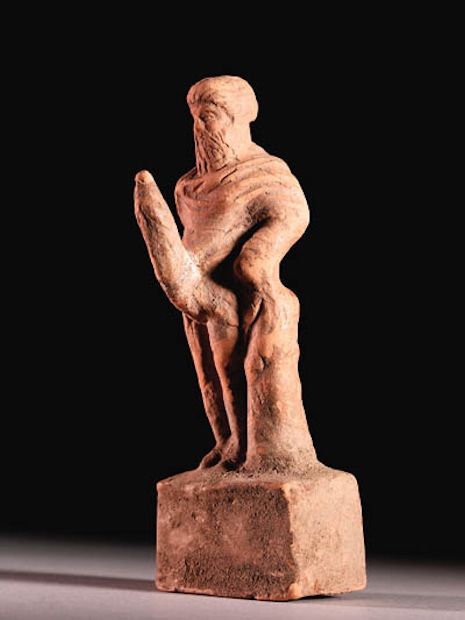
If you’ve spent any time in the Metropolitan Museum or the British Museum or really anyplace where ancient statuary is featured, you might have emitted a titter at the sight of the willies on the nekkid dudes made of marble.
Those statues prompt a pretty good question: Why are the dicks on ancient statuary so small anyway?
That’s the question that curator and blogger Ellen Oredsson, a resident of Bangkok, Thailand, recently tried to answer on her blog How to Talk About Art History.
Ellen’s answer has several parts. First, ancient statues almost always—yes, almost always—feature flaccid penises, and the penises in the statues aren’t all that small if you compare them to a real-life tuck (George Costanza was quite eloquent on the subject of “shrinkage”).

Michelangelo’s David (detail)
Second, Oredsson cites scholarship such as Kenneth Dover’s Greek Homosexuality to the effect that the Greeks may have valued smaller penises more than we do, in part because “large penises were associated with very specific characteristics: foolishness, lust and ugliness.”
Interestingly, just because you see a few Greek statues with tiny willies, that doesn’t rule out the possibility that other statues don’t follow the same rules. And indeed, some ancient statues quite noticeably do not feature small penises, but big ones. For instance, pictured below is a statue of a satyr, which Wikipedia defines as “one of a troop of ithyphallic male companions of Dionysus with equine (horse-like) features, including a horse-tail, horse-like ears, and sometimes a horse-like phallus because of permanent erection.”

If you Google “Greek satyr statue,” you’ll see plenty of other examples just like this one.
There’s also this attention-getting depiction of Priapus, a Greek fertility god on whom Hera cursed with both a permanent erection and impotence—a rough combination!

Oredsson doesn’t give it too much emphasis, but I think a major reason is that we’re all way too immature. She writes, “Ancient Greek sculptures are all about balance and idealism. Therefore, it makes sense that they wouldn’t have large penises, as this would be considered humorous or grotesque.”
Exactly. The presence of a large member is, at a minimum, a major distraction from the depiction of “the ideal Greek man,” who was meant to be “rational, intellectual and authoritative.”
And that’s all without getting into the possibility of breakage....

Previously on Dangerous Minds:
Pranksters add micropenis to giant chrome gnome statue